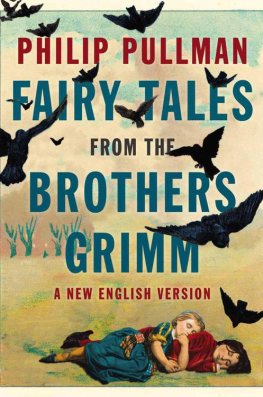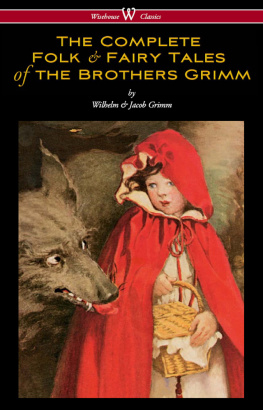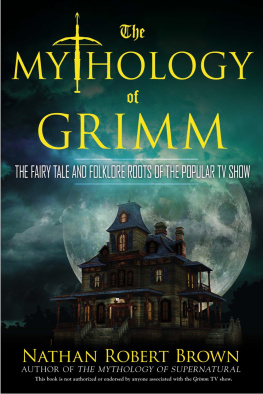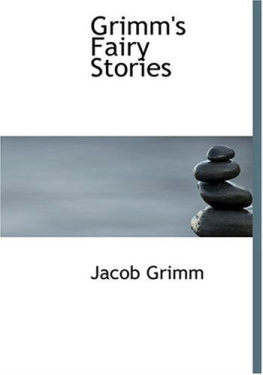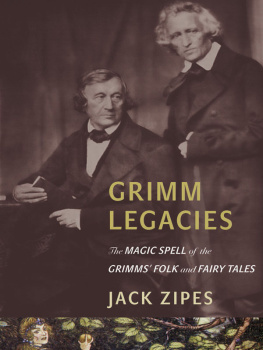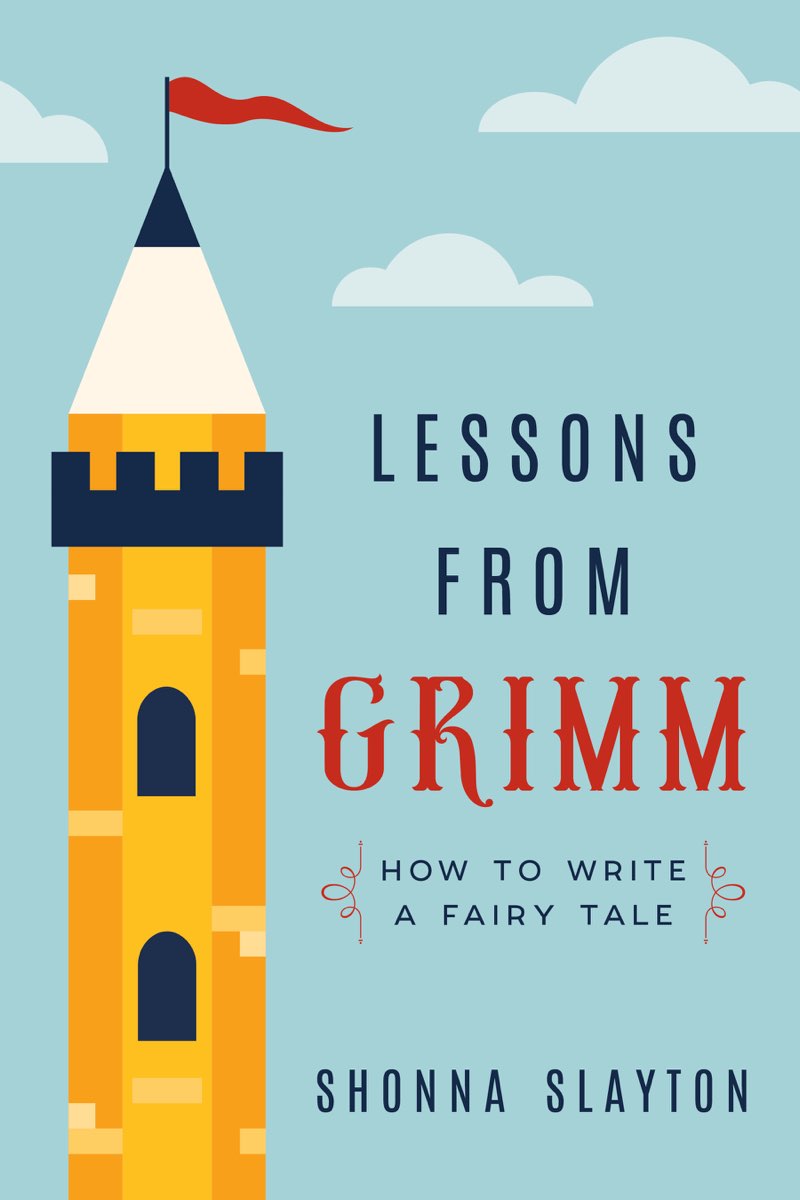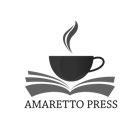All rights reserved. No part of this publication may be reproduced, distributed, or transmitted in any form or by any means, including photocopying, recording, or other electronic or mechanical methods, without the prior written permission of the publisher, except in the case of brief quotations embodied in critical reviews and certain other noncommercial uses permitted by copyright law. For permission requests, write to the author.
Quantity sales. Special discounts are available on quantity purchases by corporations, associations, and others. For details, contact the author at the web address above.
Introduction
At first blush, Grimms fairy tales are some strange stories. Adults plot against children. A knocked-off head can be reattached with a life-giving root. And the amount of rust on a knife will tell you if your brother is alive or mostly dead.
Unusual they may be, but these fairy tales have stood the test of time. There are two hundred and ten fairy tales in Grimms final collection. Theyve been enjoyed by generations of readers and sparked many a writers imagination.
Today, we can use these stories to master the basics of storytelling. After all, when Grimms fairy tales are boiled down to their simplest components, we have a pattern:
Once upon a time there was a character who lived in a setting and had a problem (plot). Fairy tale magic intervened/interfered and everyone learned a lesson (theme).
In Lessons from Grimm well do a deep dive into each of these components to study how the Grimms handled genre, character, setting, plot, magic, and theme. Well make note of repeated patterns that we can use in our own stories so we can become better writers. Whether you are working on a retelling, an adaptation, or a brand-new fairy tale, there is something you can learn from these master story tellers.
Who Am I?
Im an author known for my Fairy-Tale Inheritance Series of young adult novels, particularly Cinderellas Dress. Ive used fairy tales to teach writing to children, teens, and adults in my roles as an author, a homeschool educator, and a writer-in-residence at the library.
Having worked with the most popular fairy tales (Cinderella, Snow White, Sleeping Beauty, Beauty and the Beast, The Little Mermaid), I wanted to explore the lesser-known tales, and so I went to the well. Of all the fairy tale collections, Grimm is by far the most well-known, so this German collection seemed like a great place to start. By the way, do you know whats at the bottom of a well? Grimm can tell you, and youll find out later in this book.
How to Use This Book
If you are starting from scratch: Maybe you have a smattering of ideas about what to write, but nothing fully formed. Great! Keep a notebook handy and get ready to brainstorm. As you learn more about the Grimms fairy tales, inspiration can strike at any moment, and youll want to capture those thoughts before they flitter away. Youll learn about the fundamentals of storytelling as used by the Grimms and how all those pieces fit together. The appendices at the back of this book list hundreds of tropes to give you more ideas.
If you already have a partial or first draft: Are you already deep in the fairy tale forest and looking for some tips on how to make your story better? The Grimms can help. As you work through each section, stop and analyze the work youve already written. Use the exercises to strengthen your fairy tale based on these timeless techniques.
If you are a creative writing teacher: While not written as a teachers manual, these pages can help you walk your students through the major elements that make up a fairy tale. Each section contains examples from popular and lesser known tales. Tales filled with adventure, romance, and derring-do. The questions in the exercises at the end of each section can be used to help drive classroom discussion.
A few more things
Have a copy of Grimms complete fairy tales on hand. That way, when I mention a tale, you can read for more details. You can find all of the stories online. Go to my website for an updated list of resources.
ShonnaSlayton.com/LessonsFromGrimmResources/
A brief word on translations and copyright. The original German versions of Grimms fairy tales are in the public domain, as are many of the early translations.
The most complete and accessible translation in the public domain is from Margaret Hunt, translated in 1884 under the title Household Tales. Recent translations are still under copyright.
For claritys sake, when I quote a passage, Im using Margaret Hunts translation and changing out the thees and thous for modern ears. I also left in the excess commas and sometimes mention the modern titles of the stories.
Note: The companion workbook Lessons from Grimm Workbook provides guided space for you to brainstorm and plot out your own fairy tales. It also contains a plot chart and pages for drawing maps. The Lessons from Grimm workbooks designed for students are adjusted for grade level and complexity. For extra inspiration, there is also a series of writing prompt workbooks based on Grimms tales. Be sure to check those out.
Now. Shall we begin?
ONCE UPON A TIME GENRE
Once upon a time there was a character who lived in a setting and had a problem. Fairy tale magic intervened/interfered and everyone learned a theme.
When readers see once upon a time they know that they are about to be transported to a world far away where magic dwells. Where glass mountains exist. A land of contrasts where good princesses go toe-to-toe with wicked witches. Where the young and innocent face overwhelming odds and emerge victorious. Where possibilities are endless.
Fairy tales are different from westerns, different from dramas, different from thrillers. And yet! A fairy tale can be placed into a western setting. A fairy tale can be highly dramatic. And yes, a fairy tale can be quite thrilling.
Not Always What You Think
Before I started writing fairy tales, I had a definite opinion of what a fairy tale ought to be. I thought a fairy tale should include a princess, a fairy, and a bit of magic. Simple, right? But not too far into studying Grimms tales, I had to change my opinion.
Surprisingly, even though their stories are called fairy tales, there are no fairies. Nor are there any fairy godmothers. Instead, the Grimms write of wise women who have magical abilities that they use for good. And would it surprise you, like it did me, that there are very few dragons in Grimm? And what about those decidedly scary stories which seem to be more akin to horror stories than fairy tales? There are also a number of religious tales found in Grimm.



